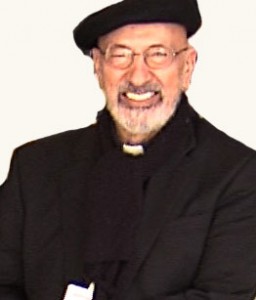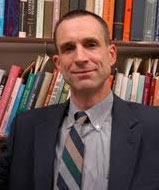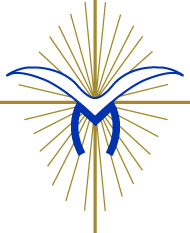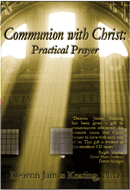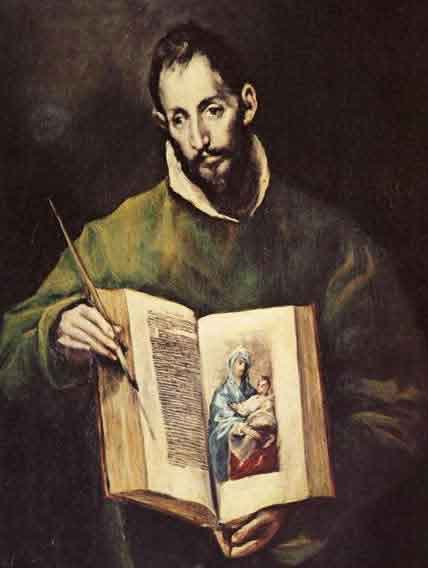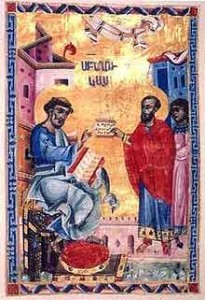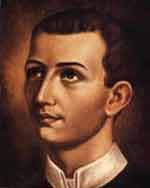Msgr. Esseff continues his reflections in the Chapel of Apparitions located in Paray le Monial, France.
[powerpress]

Msgr. Esseff opens up the special call priests have in bringing the Sacred Heart to the world. Â He also brings forward the prophetic message of Pope Paul VI in 1970 which he warns of the attack of the evil one on the priesthood in particular over a 40 year period. Â The priesthood of this time is truly the pierced heart of Christ.
Be sure to visit “Building a Kingdom of Love”
Tags: catholic, catholic podcast, catholic prayer, cathollc spirituality, Esseff, Paray le Monial, pope paul vi, priesthood, prophetic message, sacred heart, sacred heart of jesus
This entry was posted on Wednesday, October 26th, 2011 at 7:29 pm
You can follow any responses to this entry through the RSS 2.0 feed.
[powerpress]
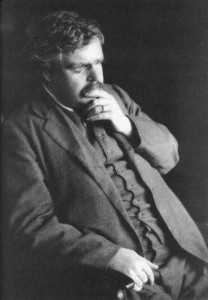 In this episode Dr. Reno discusses G. K. Chesterton his life and times, as well as his vigorous, fun, witty engagement with secular critics of Christianity which still resonate so well today.
In this episode Dr. Reno discusses G. K. Chesterton his life and times, as well as his vigorous, fun, witty engagement with secular critics of Christianity which still resonate so well today.
 Read Chesterton’s “Orthodoxy” here
“Christian Apologetics with Dr. R. R. Reno” explores numerous facets of faith and reason in the life of the Church and the world. Grounded on the work of giants, such as St. Thomas Aquinas, St. Bonaventure, Blessed John Newman, Â Blessed John Paul II, G. K. Chesterton, Blaise Pascal and Stephen Barr, Dr. Reno helps us to open our minds to make the journey to our hearts.
R. R. Reno is the editor at First Things: A Journal of Religion, Culture, and Public Life, and Professor of Theology, currently on leave from Creighton University. His theological work has been published in many academic journals. Essays and opinion pieces on religion, public life, contemporary culture, and current events have appeared in Commentary, and the Washington Post. In Fighting the Noonday Devil Reno suggests that putting ourselves at the disposal of what is real is what trains us for true piety. His other recent books include Genesis: Brazos Theological Commentary on the Bible and Sanctified Vision: An Introduction to Early Christian Interpretation of the Bible.
Tags: catholic, catholic podcast, catholic prayer, cathollc spirituality, christian apologetics, g. k. chesterton, Read Chesterton
This entry was posted on Tuesday, October 25th, 2011 at 11:24 am
You can follow any responses to this entry through the RSS 2.0 feed.
Incorruptible Bodies of Saints
[powerpress “faith-check-with-greg-youell”]
‘Remember o man that you are dust, and to dust you shall return.’  We hear these words each Ash Wednesday to remind us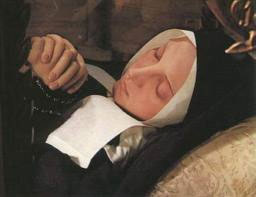 of death and judgment awaiting us all.  While our bodies are the source of so much focus in our culture, they will decay into dust, until they are ultimately resurrected and reunited with our souls at the end of the world.
of death and judgment awaiting us all.  While our bodies are the source of so much focus in our culture, they will decay into dust, until they are ultimately resurrected and reunited with our souls at the end of the world.
God has granted exceptions to this, however, in the “incorruptiblesâ€â€”saints whose bodies are miraculously preserved in tact after death, as a visible sign of their holiness.  These miracles have withstood in-depth scientific and medical examinations that rule out any possible hoaxes and make clear that they are entirely distinct from those bodies preserved through extreme temperatures or mummification.
When St. Bernadette Soubirous of Lourdes was examined in 1909, thirty years after her death, her body appeared the same as when she had been alive: her body was odorless and her skin was supple and had coloration—while the rosary in her hands had rusted over.  Today her body can still be observed and pilgrims state that looks as if she were merely asleep.
And then there’s the St. Anthony of Padua.  Years after his death his body had decayed, but God had preserved the great preacher’s tongue alone—those present reported that it was perfectly pink.
Tags: catholic, catholic podcast, catholic prayer, cathollc spirituality, miracles
This entry was posted on Monday, October 24th, 2011 at 2:23 pm
You can follow any responses to this entry through the RSS 2.0 feed.
“Forgiveness: A Catholic Approach” is exceptional!  Fr. Scott Hurd has penned the book that should be in 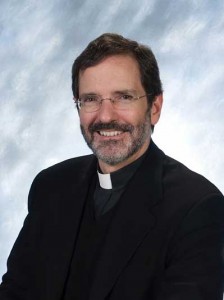 every Catholic home.  To forgive,  without exception, is the hallmark of the Christian life and one of the hardest things to do.  Every single chapter in “Forgivness” is a gem.  Whether it’s is the challenge of “not becoming a doormat”, dealing with our anger over hurts, or reconciling the fact that life isn’t necessarily fair, Fr. Hurd offers timely wisdom from the heart of the Church to the experiences of everyday life in order for us to follow the way of Jesus Christ…and to forgive.  I love this book!
every Catholic home. Â To forgive, Â without exception, is the hallmark of the Christian life and one of the hardest things to do. Â Every single chapter in “Forgivness” is a gem. Â Whether it’s is the challenge of “not becoming a doormat”, dealing with our anger over hurts, or reconciling the fact that life isn’t necessarily fair, Fr. Hurd offers timely wisdom from the heart of the Church to the experiences of everyday life in order for us to follow the way of Jesus Christ…and to forgive. Â I love this book!
[powerpress]
“All of us know that there is more to forgiveness than simply saying “I’m sorry.” In the section entitled, “Hallmarks of Forgiveness,” Father Hurd deftly outlines seven such marks of forgiveness that reflect the teaching and example of Our Lord. In Jesus, we learn how to forgive others as God has forgiven us. Forgiveness is a decision, a process, and a gift.
“Equally challenging today is the question of how to forgive. In Forgiveness: A Catholic Approach we find an entire section on this topic. With priestly wisdom, Father Hurd examines a wide variety of experiences of forgiveness and reconciliation. With examples from Scripture, Church tradition, literature, and his own ministry, he offers a useful ten-step process to aid people ready to make the decision to forgive.”
–Cardinal Donald Wuerl, from the Introduction
You can find “Forgiveness” here
Visit Pauline.org for more information
Tags: catholic, catholic podcast, catholic prayer, cathollc spirituality
This entry was posted on Monday, October 24th, 2011 at 7:21 am
You can follow any responses to this entry through the RSS 2.0 feed.
Show 7 – The Truth About Contraception part 1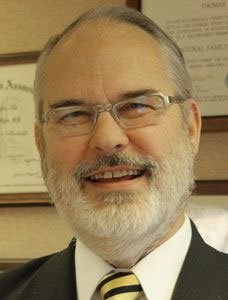
“Your Fertility Care Consultâ€
with Dr. Thomas Hilgers, founder of the Pope Paul VI Institute
for The Study of Human Reproduction
hosted by Kris McGregor
[powerpress]
listen to the entire series at Dr. Hilger’s Discerning Hearts Page
The Pope Paul VI Institute, founded in 1985 by Thomas W. Hilgers, MD, is internationally recognized for its outstanding achievements in the field of natural fertility regulation and reproductive medicine — 30 years of scientific research and educational program development; allied health professional education programs for couples and professionals; professional, caring, and morally acceptable patient services. The Pope Paul VI Institute for the Study of Human Reproduction is building a culture of life in women’s health care through its major developments — Creighton Model FertilityCare System and NaProTechnology.
Tags: catholic, catholic podcast, catholic prayer, cathollc spirituality, Contraception, human reproduction, pope paul vi institute, thomas hilgers, Thomas W. Hilgers
This entry was posted on Monday, October 24th, 2011 at 3:06 am
You can follow any responses to this entry through the RSS 2.0 feed.
 Msgr. Esseff continues his reflections in the Chapel of the Apparitions in Paray le Monial, France.
Msgr. Esseff continues his reflections in the Chapel of the Apparitions in Paray le Monial, France.
[powerpress]
Msgr. Esseff discusses the clash of the two kingdoms….salvation history in light of the Sacred Heart of Jesus. Â In every heart there is a collision between the force of light and the force of darkness, between the force  of lies and the force of truth. Â It’s a collision that is occurring throughout the world.
of lies and the force of truth. Â It’s a collision that is occurring throughout the world.
The Sacred Heart calls us to love to win the battle.
for more visit Msgr. Esseff’s website : Building A Kingdom of Love
Tags: catholic, catholic podcast, catholic prayer, cathollc spirituality, Esseff, John Esseff Msgr, sacred heart of jesus
This entry was posted on Saturday, October 22nd, 2011 at 9:40 am
You can follow any responses to this entry through the RSS 2.0 feed.
Heart of Hope Part 6 – Is there a light at the end of the tunnel? Am I being punished? Why do the innocent and faithful suffer? Behold the wood of the cross. The core of redemptive suffering.
[powerpress = “deacon-james-keating”]
Deacon James Keating, PhD, the director of Theological Formation for the Institute for Priestly Formation, located at Creighton University, in Omaha, is making available to “Discerning Hearts” and all who listen, his series of programs entitled “The Heart of Hope”.
This extraordinarily popular series explores the work of suffering in the Christian life and how God can use it to transform the heart of the individual and the world. 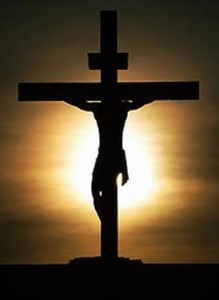
The “Heart of Hope”  tackles a very tough subject…the gift of suffering in the Christian life. Deacon Keating guides us well.
For more information on the “Institute of Priestly Formation” and for other material available by Deacon Keating, just click here
Don’t forget to pickup a copy of “Communion with Christ” , it is one of the best audio sets on prayer…ever!
Check out Deacon Keating’s “Discerning Heart” page
[powerpress]
Tags: catholic, catholic podcast, catholic prayer, cathollc spirituality, creighton university, Deacon James Keating, Deacon Keating, institute for priestly formation, PhD, purpose of life, redemptive suffering, suffering, theological formation
This entry was posted on Thursday, October 20th, 2011 at 7:01 am
You can follow any responses to this entry through the RSS 2.0 feed.
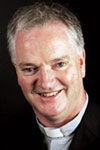 The secretary of the Pontifical Council for Social Communications, Mgr Paul Tighe, has just
The secretary of the Pontifical Council for Social Communications, Mgr Paul Tighe, has just 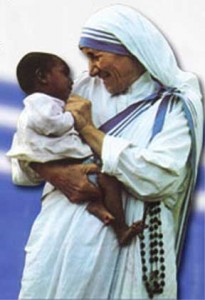 returned from a visit to India where he attended a seminar on the role of new media and communications in seminary formation. The four day meeting in Calcutta included talks as well as practical training sessions and began with a Mass at the tomb of Blessed Mother Teresa of Calcutta.
returned from a visit to India where he attended a seminar on the role of new media and communications in seminary formation. The four day meeting in Calcutta included talks as well as practical training sessions and began with a Mass at the tomb of Blessed Mother Teresa of Calcutta.
[powerpress = “Vatican Radio”]
Mgr Tighe told Philippa Hitchen about the goals of the seminar and why the ‘saint of the gutter’ can be seen as an icon for the world of media and communications…..
see more on the website for Vatican Radio
Tags: catholic, catholic podcast, catholic prayer, cathollc spirituality, Mons. Paul Tighe, mother teresa, Paul Tighe, Pontifical Council for Social Communication, Pontifical Council for Social Communications, vatican radio
This entry was posted on Tuesday, October 18th, 2011 at 4:15 pm
You can follow any responses to this entry through the RSS 2.0 feed.
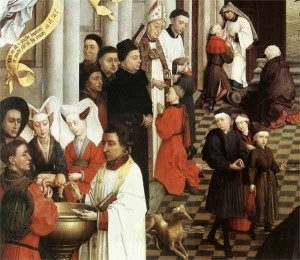 This video shows a very brief overview of the Seven Sacraments of the Christian, Catholic Church. From these sign we receive the graces of salvation.
This video shows a very brief overview of the Seven Sacraments of the Christian, Catholic Church. From these sign we receive the graces of salvation.
The chant is the Easter Octave hymn ‘Aqua Sapientiae’. The lyrics and translation:
Aqua sapientiae potavit eos, Alleluia: firmabitur in illis, et non flectetur, Alleluia:
et exaltabit eos in aeternum, Alleluia, Alleluia.
Confitemini Domino, et invocate nomen eius: annuntiate inter gentes opera eius.
Aqua sapientiae…
He gave them to drink of the water of wisdom, Alleluia: it will become strong in them, and will not be changed, Alleluia: and He will exult them forever, Alleluia, Alleluia.
Acknowledge the Lord, and call upon His name: proclaim His works among the peoples.
He gave them
Tags: Alleluia, Aqua sapientiae, catholic, catholic podcast, catholic prayer, cathollc spirituality, gregorian chant, Seven Sacraments
This entry was posted on Tuesday, October 18th, 2011 at 3:01 pm
You can follow any responses to this entry through the RSS 2.0 feed.
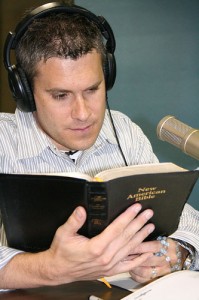 Mark Hart “The Bible Geek” talks to us about the importance of St. Luke
Mark Hart “The Bible Geek” talks to us about the importance of St. Luke
[powerpress]
Luke was a Greco-Syrian physician who lived in the Greek city of Antioch in Ancient Syria.
His earliest notice is in Paul’s Epistle to Philemon, verse 24. He is also mentioned in Colossians 4:14 and 2 Timothy 4:11, two works commonly ascribed to Paul. The next earliest account of Luke is in the Anti-Marcionite Prologue to the Gospel of Luke, a document once thought to date to the 2nd century, but which has more recently been dated to the later 4th century.
If one accepts that Luke was in fact the author of the Gospel bearing his name and also the Acts of the Apostles, certain details of his personal life can be reasonably assumed. While he does exclude himself from those who were eyewitnesses to Jesus’ ministry, he repeatedly uses the word “we” in describing the Pauline missions in Acts of the Apostles, indicating that he was personally there at those times.[9]Epiphanius states that Luke was one of the Seventy (Panarion 51.11), and John Chrysostom indicates at one point that the “brother” Paul mentions in 2 Corinthians 8:18 is either Luke or Barnabas. J. Wenham asserts that Luke was “one of the Seventy, the Emmaus disciple, Lucius of Cyrene and Paul’s kinsman.” Not all scholars are as confident of all of these attributes as Wenham is, not least because Luke’s own statement at the beginning of the Gospel of Luke (1:1–4) freely admits that he was not an eyewitness to the events of the Gospel.
There is similar evidence that Luke resided in Troas, the province which included the ruins of ancient Troy, in that he writes in Acts in the third person about Paul and his travels until they get to Troas, where he switches to the first person plural. The “we” section of Acts continues until the group leaves Philippi, when his writing goes back to the third person. This change happens again when the group returns to Philippi. There are three “we sections” in Acts, all following this rule. Luke never stated, however, that he lived in Troas, and this is the only evidence that he did.
The composition of the writings, as well as the range of vocabulary used, indicate that the author was an educated man. The quote in the Letter of Paul to the Colossians differentiating between Luke and other colleagues “of the circumcision”[10] has caused many to speculate that this indicates Luke was a Gentile. If this were true, it would make Luke the only writer of the New Testament who can clearly be identified as not being Jewish. However, that is not the only possibility. The phrase could just as easily be used to differentiate between those Christians who strictly observed the rituals of Judaism and those who did not.[9]
Luke died at age 84 in Boeotia, according to a “fairly early and widespread tradition”.[11] According to Nikiphoros-Kallistos Xanthopoulos (Eccles. History XIVth c. AD., Migne P.G. 145, 876) and others, Luke’s Tomb was located in Thebes (Greece), from whence his relics were transferred to Constantinople in the year 357.
Luke as a historian
Most scholars understand Luke’s works (Luke-Acts) in the tradition of Greek historiography. The preface of The Gospel of Luke (1:1-4) drawing on historical investigation is believed to have identified the work to the readers as belonging to the genre of history. There is some disagreement about how best to treat Luke’s writings, with some historians regarding Luke as highly accurate, and others taking a more critical approach.Archaeologist Sir William Ramsay wrote that “Luke is a historian of the first rank; not merely are his statements of fact trustworthy…[he] should be placed along with the very greatest of historians.” Professor of classics at Auckland University, E.M. Blaiklock, wrote: “For accuracy of detail, and for evocation of atmosphere, Luke stands, in fact, with Thucydides. The Acts of the Apostles is not shoddy product of pious imagining, but a trustworthy record…it was the spadework of archaeology which first revealed the truth.”  New Testament scholar Colin Hemer has made a number of advancements in understanding the historical nature and accuracy of Luke’s writings.Â
Luke as an artist
Another Christian tradition states that he was the first icon painter. He is said to have painted pictures of the Virgin Mary (for example, The Black Madonna of CzÄ™stochowa or Our Lady of Vladimir) and of Peter and Paul. Thus late medieval Guilds of St Luke in the cities of Flanders, or the “Accademia di San Luca” (Academy of St. Luke) in Rome–imitated in many other European cities during the 16th century–gathered together and protected painters. The tradition that Luke painted icons of Mary and Jesus has been common, particularly in Eastern Orthodoxy. The tradition also has support from the Saint Thomas Christiansof India who claim to still have one of the Theotokos icons that St. Luke painted and which St. Thomas brought to India.ÂNew Testament books
- See also Gospel of Luke  and Acts of the Apostles
Some scholars attribute to Luke the third Gospel and the Acts of the Apostles, which is clearly meant to be read as a sequel to the Gospel account. Other scholars question Luke’s authorship of these books. Many secular scholars give credit to Luke’s abilities as a historian. Both books are dedicated to oneTheophilus and no scholar seriously doubts that the same person wrote both works, though neither work contains the name of its author.
Many argue that the author of the book must have been a companion of the Apostle Paul, because of several passages in Acts written in the first person plural (known as the We Sections). These verses seem to indicate the author was traveling with Paul during parts of his journeys. Some scholars report that, of the colleagues that Paul mentions in his epistles, the process of elimination leaves Luke as the only person who fits everything known about the author of Luke/Acts.
Additionally, the earliest manuscript of the Gospel, dated circa AD 200, ascribes the work to Luke; as did Irenaeus, writing circa AD 180; and the Muratorian fragment from AD 170. Scholars defending Luke’s authorship say there is no reason for early Christians to attribute these works to such a minor figure if he did not in fact write them, nor is there any tradition attributing this work to any other author.
The ox as symbol of St. LukeIn traditional depictions, such as paintings, evangelist portraits and church mosaics, St. Luke is often accompanied by an ox or bull, usually having wings. Also, only the symbol may be shown, especially when in a combination of those of all Four Evangelists.
Tags: catholic, catholic podcast, catholic prayer, cathollc spirituality, gospel of luke, life teen
This entry was posted on Tuesday, October 18th, 2011 at 10:19 am
You can follow any responses to this entry through the RSS 2.0 feed.
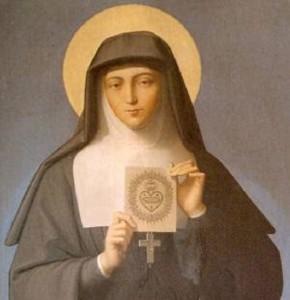 Upon visiting the Chapel of the Apparition in
Upon visiting the Chapel of the Apparition in  Paray le Monial during the 1st Sacred Heart World Congress, Msgr. Esseff reflects on the meaning of the Sacred Heart for St. Margaret Mary, her experience and ours today.
Paray le Monial during the 1st Sacred Heart World Congress, Msgr. Esseff reflects on the meaning of the Sacred Heart for St. Margaret Mary, her experience and ours today.
[powerpress]
At that particular moment it felt as though there was a beating of the Sacred Heart, similiar to what must have been experienced by St. Margaret Mary. “Behold the heart that has loved so much that has received so little love in return.”
Check out Msgr. John Esseff’s website: Â Building a Kingdom of Love
Tags: catholic, catholic podcast, catholic prayer, cathollc spirituality, margaret mary alacoque, msgr. john esseff, sacred heart, sacred heart of jesus, St. Margaret Mary
This entry was posted on Monday, October 17th, 2011 at 2:24 pm
You can follow any responses to this entry through the RSS 2.0 feed.
A Prayer to Gerard Majella
[powerpress = “devotionals-prayers”]
Saint Gerard Majella April 6, 1726, Muro Lucano, Basilicata – October 16, 1755, He is the saint whose intercession is requested for children (and unborn children in particular), childbirth, mothers (and expectant mothers in particular), motherhood, falsely accused people, good confessions, lay brothers and just about anyone who desires the comfort of an understanding heart.
When he was born, he was given the name Gerard. He was the son of a tailor who died when Gerard was twelve, leaving the family in poverty. His mother then sent him to her brother so that he could teach Gerard how to sew and help the business. During this time, he was abused by a man whom his uncle sent to help him. He kept silent, but soon his uncle found out and the man who taught him resigned from the job. He loved to be like Jesus Crucified and tried at all costs to suffer. . He joined the Congregation of the Most Holy Redeemer in 1749. When falsely accused by a pregnant woman of being the father of her child, he retreated to silence. She later recanted and cleared him, and thus began his association as patron of all aspects of pregnancy. He was reputed to have bilocation and read consciences. His last will consisted of a small note on the door of his cell saying, “Here the will of God is done, as God wills, and as long as God wills.“ He died on October 16, 1755 in Caposele of tuberculosis, aged 29.
This very short synposis of his life does not do him justice, for more details of his life and so much more visit the website of the Redemptorists.Â
I found the best way to really know St. Gerard is to pray with him.  For a fuller listing of prayers and a novena to St. Gerard visit his Discerning Hearts page
Saint Gerard Prayers –
For Motherhood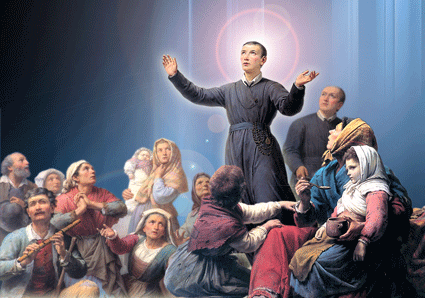
O good Saint Gerard, powerful intercessor before God and Wonderworker of our day, I call upon thee and seek thy aid. Thou who on earth didst always fulfill God’s designs, help me to do the holy Will of God. Beseech the Master of Life, from Whom all paternity proceedeth, to render me fruitful in offspring, that I may raise up children to God in this life and heirs to the Kingdom of His Glory in the world to come. Amen.
For Mother with Child
O almighty and Everlasting God Who through the operation of the Holy Christ, didst prepare the body and soul of the glorious Virgin Mary to be a worthy dwelling place of Thy divine Son; and, through the operation of the same Holy Ghost, didst sanctify Saint John the Baptist, while still in his mother’s womb; hearken to the prayers of Thy humble servant who implore thee, through the intercession of Saint Gerard, to protect her (me); that it may be cleansed by the saving water of baptism and, after a Christian life on earth, it may with its mother, attain everlasting bliss in Heaven. Amen.
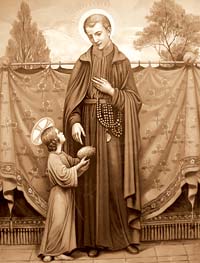 For a Sick Child
For a Sick Child
O Saint Gerard, who, like the Savior, loved children so tenderly and by your prayers freed many from disease and even from death; graciously look down upon the distressed parents who plead with thee for their child’s health if such be the Will, of God. Present their promise to God to bring up the child a good Christian and to guard it by word and example against the fatal leprosy of sin. This favor we implore thee, O sainted Brother, through the tender love with which Jesus and Mary blessed thy own innocent childhood. Amen.
In Time of Trial
O Sainted Brother Gerard, whose heart went out to the unfortunate; who relieved so many poor, healed so many sick, comforted so many afflicted; behold me worried and troubled as I kneel at thy feet. In vain to turn to men to seek consolation and help; therefore, do I have recourse to thee thou who art so powerful in heaven. Graciously assist me, Saint Gerard, that being freed from this trial or strengthened to bear it for the love of God, I may praise and thank God and serve Him with greater love and fervor. Amen.
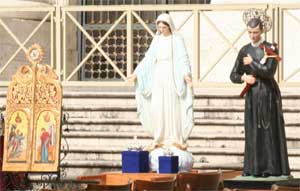 When in Rome, during the Wednesday audience, we saw them bring out a statue of St. Gerard to be blessed by our Holy Father, Pope Benedict. Of course, it would be blessed along with an image of Our Lady. I am sure wherever this statue is now, there are many candles lit requesting this wonderful saints intercession. May all their prayers be answered. St. Gerard Majella, pray for us.
When in Rome, during the Wednesday audience, we saw them bring out a statue of St. Gerard to be blessed by our Holy Father, Pope Benedict. Of course, it would be blessed along with an image of Our Lady. I am sure wherever this statue is now, there are many candles lit requesting this wonderful saints intercession. May all their prayers be answered. St. Gerard Majella, pray for us.
Tags: catholic, catholic podcast, catholic prayer, cathollc spirituality, childbirth, difficult pregnancy, gerard majella, motherhood, mothers, prayer, unwed mothers
This entry was posted on Sunday, October 16th, 2011 at 8:10 am
You can follow any responses to this entry through the RSS 2.0 feed.
Episode 7 – Great Works in Western Literature with Joseph Pearce – Harriet Beecher Stowe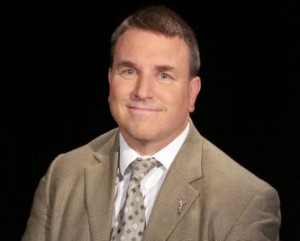
Harriet Beecher Stowe was appalled by slavery, and she took one of the few options open to nineteenth century women who wanted to affect public opinion: she wrote a novel, a huge, enthralling narrative that claimed the heart, soul, and politics of 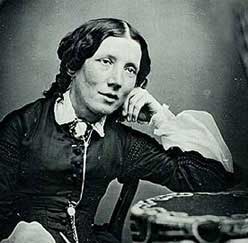 millions of her contemporaries. Uncle Tom’s Cabin paints pictures of three plantations, each worse than the other, where even the best plantation leaves a slave at the mercy of fate or debt. Her questions remain penetrating even today: “Can man ever be trusted with wholly irresponsible power?”
millions of her contemporaries. Uncle Tom’s Cabin paints pictures of three plantations, each worse than the other, where even the best plantation leaves a slave at the mercy of fate or debt. Her questions remain penetrating even today: “Can man ever be trusted with wholly irresponsible power?”
First published more than 150 years ago, this monumental work is today being reexamined by critics, scholars, and students. Though “Uncle Tom” has become a synonym for a fawning black yes-man, Stowe’s Tom is actually American literature’s first black hero, a man who suffers for refusing to obey his oppressors. Uncle Tom’s Cabin is a living, relevant story, passionate in its vivid depiction of the cruelest forms of injustice and inhumanity-and the courage it takes to fight against them.
[powerpress]
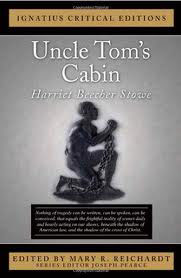 Based on the Ignatius Critical Edition, this series examines, from the Judeo-Christian perspective, the life, the times, and influence of authors of great works in literature .
Based on the Ignatius Critical Edition, this series examines, from the Judeo-Christian perspective, the life, the times, and influence of authors of great works in literature .
Joseph Pearce is currently the Writer-in-Residence and Visiting Fellow at Thomas More College of Liberal Arts in Merrimack, New Hampshire. He is also Visiting Scholar at Mount Royal Academy in Sunapee, New Hampshire. He is also Visiting Scholar at Mount Royal Academy in Sunapee, New Hampshire. He is co-editor of the Saint Austin Review (or StAR), an international review of Christian culture, literature, and ideas published in England (Family Publications) and the United States (Sapientia Press). He is also the author of many books, including literary biographies of Solzhenitsyn, J. R. R. Tolkien, C. S. Lewis, G. K. Chesterton, and Oscar Wilde.
To learn more about the authors and titles available in the Ignatius Critical Editions
Tags: ave maria university, catholic, catholic podcast, catholic prayer, cathollc spirituality, harriet beecher stowe, Harriet Beecher Stowe Harriet Beecher Stowe, heart, ignatius critical editions, joseph pearce, literary biographies, mercy, sapientia press, women
This entry was posted on Friday, October 14th, 2011 at 1:23 pm
You can follow any responses to this entry through the RSS 2.0 feed.
Heart of Hope Part 5 – The purpose of life,  the suffering of humanity and how it relates to the grace of God. Emotional Suffering, Purgation, Christ’s sacrifice on the Cross, and Redemption.
[powerpress = “deacon-james-keating”]
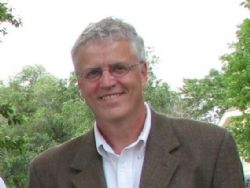 Deacon James Keating, PhD, the director of Theological Formation for the Institute for Priestly Formation, located at Creighton University, in Omaha, is making available to “Discerning Hearts” and all who listen, his series of programs entitled “The Heart of Hope”.
Deacon James Keating, PhD, the director of Theological Formation for the Institute for Priestly Formation, located at Creighton University, in Omaha, is making available to “Discerning Hearts” and all who listen, his series of programs entitled “The Heart of Hope”.
This extraordinarily popular series explores the work of suffering in the Christian life and how God can use it to transform the heart of the individual and the world. 
The “Heart of Hope”  tackles a very tough subject…the gift of suffering in the Christian life. Deacon Keating guides us well.
For more information on the “Institute of Priestly Formation” and for other material available by Deacon Keating, just click here
Don’t forget to pickup a copy of “Communion with Christ” , it is one of the best audio sets on prayer…ever!
Check out Deacon Keating’s “Discerning Heart” page
Tags: catholic, catholic podcast, catholic prayer, cathollc spirituality, creighton university, Deacon James Keating, Deacon Keating, discerning heart, institute for priestly formation, james keating, PhD, prayer, purgation, purpose of life, suffering, theological formation
This entry was posted on Thursday, October 13th, 2011 at 7:59 pm
You can follow any responses to this entry through the RSS 2.0 feed.
“Be A Man: Becoming the Man God Created You to Be” is important for all of us to read – male and female! 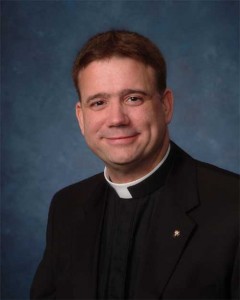  Bruce and I had the chance to speak with Fr. Larry Richards about the challenges faced by men in today’s culture to be authentically the males God desires them to be.  The emphasis is on the  importance of a healthy spiritual life in leading to true manhood.  Fr. Larry minces no words in what he offers and the challenges men of all ages.
 Bruce and I had the chance to speak with Fr. Larry Richards about the challenges faced by men in today’s culture to be authentically the males God desires them to be.  The emphasis is on the  importance of a healthy spiritual life in leading to true manhood.  Fr. Larry minces no words in what he offers and the challenges men of all ages.
[powerpress]
“Father Larry talks straight to men in his own manly style. He pulls no spiritual punches–I don’t think he knows how to! He pokes, pushes, sometimes verbally slaps men into being God’s men, all with an obvious love for them and faith in their ability to persevere to heaven.”
— Dr. Ray Guarendi, radio host and author
Check out this book at Igantius.com
 Also check out Fr. Larry’s interview
Also check out Fr. Larry’s interview
for his book on discernmentcalled “Surrender” on Inside the Pages #121Â
Tags: catholic, catholic podcast, catholic prayer, cathollc spirituality, male spirituality, manhood
This entry was posted on Thursday, October 13th, 2011 at 1:37 pm
You can follow any responses to this entry through the RSS 2.0 feed.

